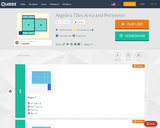
This is an interactive, game-based formative assessment on finding the area and perimeter of algebra tiles.
- Subject:
- Mathematics
- Material Type:
- Formative Assessment
- Game
- Interactive
- Provider:
- Quizizz Inc
- Date Added:
- 01/18/2017

This is an interactive, game-based formative assessment on finding the area and perimeter of algebra tiles.
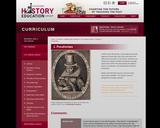
From the site: Thanks to the Disney film, most students know the legend of Pocahontas. But is the story told in the 1995 movie accurate? In this lesson, students use evidence to explore whether Pocahontas actually saved John Smith's life and practice the ability to source, corroborate, and contextualize historical documents.Please note that there are two versions of the lesson plan available. The shorter version is designed for younger students.

This reading log is meant to help students monitor their reading in class. There is a tab for each month so students can track how many books they read in the school year. Students also track the date and notes about the book they are reading.

Reading Rotation Exit Slip

Let's Recap is a website and is also an app. Teachers can invite students to their class and once students are listed in their class, they can assign questions. Once questions are assigned studnets can video record their response. This is great for exit tickets, reflections, and self assessments.

Big Ideas: A fraction describes the division of wholes into equal shares. Equal shares have the same area or amount, but do not have to be the same shape.
This lesson builds on students' work with partitioning circles and rectangles into two, three, and four equal shares. This task uses a scenario in which students share a birthday cake. Students will be presented with kids who each want to share their cake differently and asked to justify which kids are sharing equally. Students will be building their foundational knowledge of fractions by representing, labeling, and justifying equal shares. The mathematical concepts in this lesson build toward students' future work with naming fractions, comparing fractions, and equivalent fractions.
Vocabulary: fraction, equal shares, halves, thirds, fourths, sixths, eighths
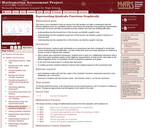
Mathematical goals
This lesson unit is intended to help you assess how well students are able to understand what the different algebraic forms of a quadratic function reveal about the properties of its graphical representation. In particular, the lesson will help you identify and help students who have the following difficulties:
Understanding how the factored form of the function can identify a graph's roots.Understanding how the completed square form of the function can identify a graph's maximum or minimum point.Understanding how the standard form of the function can identify a graph's intercept.
Before the lesson, students work individually on an assessment task that is designed to reveal their current understandings and difficulties. You then review their work and create questions for students to answer in order to improve their solutions.After a whole-class interactive introduction, students work in pairs on a collaborative discussion task in which they match quadratic graphs to their algebraic representation. As they do this, they begin to link different algebraic forms of a quadratic function to particular properties of its graph.At the end of the lesson there is a whole-class discussion.In a follow-up lesson students attempt to improve their original response to the assessment task.
Materials required
Each individual student will need two copies of the Quadratic Functions assessment task and a mini-whiteboard, pen, and eraser.Each pair of students will need Domino Cards 1 and Domino Cards 2, cut into ten ‘dominoes'.
Time needed
15 minutes before the lesson, a 95-minute lesson (or two shorter lessons), and 10 minutes in a follow-up lesson. Timings are approximate and will depend on the needs of the class.
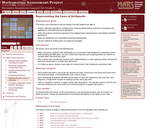
This comprehensive lesson plan taps on students' conceptual understanding of the area model, order of operations, and whole-number exponents to explore and solve a card-matching task. Students will need to match a set of compound rectangles to numerical expression that will give the area for the figure. Students will need to utilize the distributive and commutative properties to solve the task. Aside from the expressions and equations standard, this resource can be used as a geometry/measurement task as well. This lesson plan contemplates individual and group activities producing student engagement.

This series of classroom activities were written to support educators who use the 2022 video series "Elections 101" from the Wisconsin Elections Commission (WEC).
"The Right ID for Me" helps students answer the question "What forms of ID are acceptable for voting in Wisconsin, and how can they be obtained?". Teachers will use two of the videos from the WEC ("Elections Overview" and "Election Security") to research the requirements for the forms that can be used as acceptable ID to vote in Wisconsin.

This task is intended as a classroom activity. Students pool the results of many repetitions of the random phenomenon (rolling dice) and compare their results to the theoretical expectation they develop by considering all possible outcomes of rolling two dice. This gives them a concrete example of what we mean by long term relative frequency.

This website is great for teaching students to recognize signs, symbols, and labels related to safety. The website provides pictures and descriptions of physical safety symbols, fire safety symbols, first-aid symbols, hazard symbols, radiation hazard symbols, and other symbols. As an interactive activity, students should make flashcards as they navigate the website. The front side of the flashcard could have a picture or drawing of the symbol, and the backside could have a description of its meaning. The goal of this activity is to familiarize students with safety symbols, labels, and signs that they may encounter in a medical setting, so they can recognize them and stay safe in their future healthcare jobs. As a supplemental activity, students could use the scenario worksheet linked in the WISELearn description (answer key provided). Students could also complete a scavenger hunt around the school's science laboratories to find safety symbols. If a science lab is not available, then teachers could print pictures of medical settings, and students can identify all the signs, symbols, and labels in the pictures. Another supplemental activity could be doing the flyswatter review game; pictures of the signs, symbols, and labels would be printed and taped to the board. Teachers would read descriptions to two students with flyswatters, and they race to identify the correct symbol.
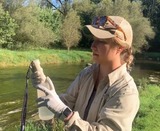
This is a Data Nugget that features Lexi Passante from the University of Wisconsin-Milwaukee. She shares her data on the impact of road salt on ecosystems near paved roads in Wisconsin. Salt is applied to roads in snowy climates to help keep them safe during the winter. When the snow melts, salt makes its way into local rivers. Halophiles, or bacteria that thrive in salty conditions might be a good indicator of how much salt is in a particular waterway, telling scientists when certain areas have become too polluted with salt.
This resource has been reviewed using the HQIM rubric
https://docs.google.com/spreadsheets/d/1LYgn6VNpvgX7yZQV5UGzHMQVJO8Y0TKkKjZAA4j4WI4/edit?usp=sharing
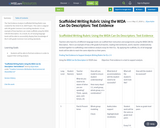
The Text Evidence Analysis Scaffolded Writing Rubric was created for the CESA #1 EL OER Project. This rubric is aligned with 9th grade Common Core writing standards. It is an example of how teachers can create scaffolds using the WIDA CAN DO Descriptors. As a result, ELs of varying language levels will be able to successfully display their knowledge of the 9-12th grade Common Core writing standards.

Students will have the opportunity to research scholarships (both national and local), identify tips for applications, and write sample answers to aid in obtaining scholarships.
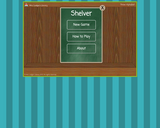
Shelver! is a game for elementary students to play and practice their library organization skills using call numbers on spine labels. Both fiction and nonfiction options are available with three levels of difficulty.

This series of classroom activities were written to support educators who use the 2022 video series "Elections 101" from the Wisconsin Elections Commission (WEC).
"Should We Lower the Voting Age?" helps students answer the question "Should the U.S. lower the voting age?". Teachers will use the videos "Elections Overview" and "Nuts and Bolts" from the WEC as a starting point to build a Socratic Seminar from their own research on the topic.

Students will be given a sheet with shape names on it. They will draw several two-dimensional shapes using the information that they already know about. They will look over their shapes and compare them, first to their other shapes and then to other students. While doing this the students will look at what attributes make up the different shapes. They will also compare and contrast their own shapes.

This is a digital download of a math scoot. This scoot allows students to move around your classroom responding to one question at a time. The questions have a wide variety of difficulty for simplifying algebraic expressions. The simplifying expressions cards include combining like terms using addition or subtraction, and simplifying by using the distributive property.
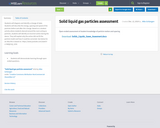
Students will diagram and identify a change of state. Students will describe the energy, spacing and speed of the particles before and after this change.
Based on a student activity where students danced around the room acting as particles, students will identify an incorrect action during the dance. They will explain why the action did not fit the particle model and how it could be corrected. See below for an idea this is based on.
https://www.youtube.com/watch?v=SWQCUQ_UZiA
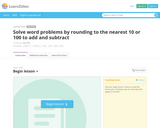
Big Ideas: Rounding is an appropriate strategy for solving problems and estimating. Numbers can be decomposed and recomposed to add and subtract.
This lesson builds on student knowledge of place value of whole numbers less than or equal to 1000. This task uses a range of weights for endangered animals for students to apply rounding principles to make totals of 1000 and 2000 using addition and subtraction strategies. This builds conceptual understanding of rounding to build upon for practical use for problem solving using addition, subtraction, multiplication, and division.
Vocabulary: base-ten, expanded form, place value, accurate, complements, commutative property, partial sums